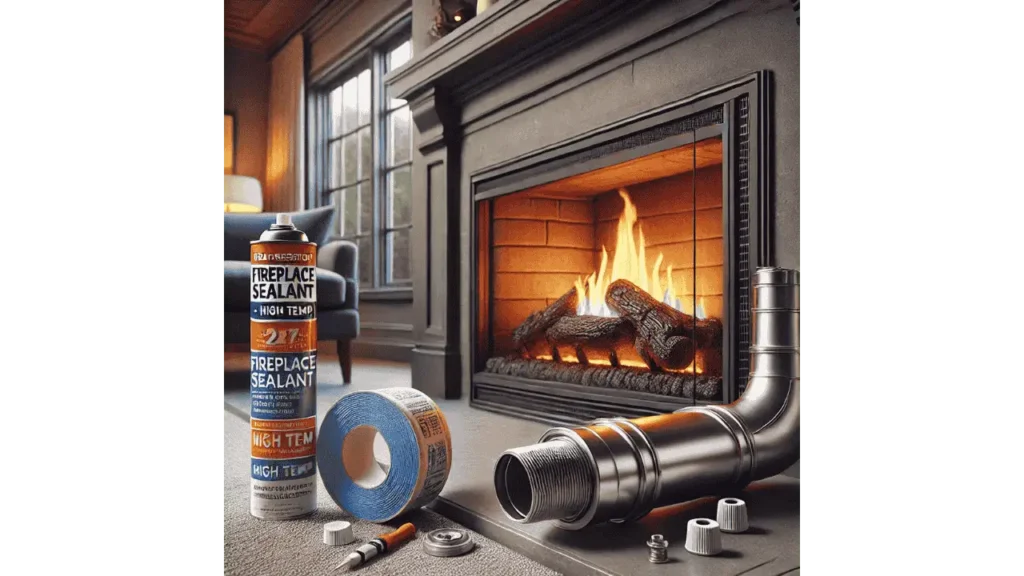A draft coming from your direct vent gas fireplace can make your home uncomfortable and reduce heating efficiency. These drafts often result from improper installation, worn-out seals, or gaps in the venting system. Understanding how to identify and resolve these issues can help you maintain a cozy indoor environment.
Identifying the Source of the Draft:
Before attempting to fix the issue, it’s important to locate the source of the draft. Check around the fireplace frame, vent connections, and surrounding areas for any gaps or leaks. Feel for cold air coming through the unit or inspect for visible cracks in the seals. A thorough inspection can help determine if the draft is due to structural gaps or venting issues.
Sealing Gaps and Leaks
One of the most effective ways to stop drafts is by sealing any gaps around the fireplace. Use high-temperature silicone caulk to seal minor gaps and weather-stripping material to reinforce the fireplace frame. Ensure that the glass panel is properly secured and that its gasket is intact to prevent air leaks. Addressing these minor gaps can significantly improve heat retention and eliminate unwanted cold air intrusion.
Inspecting the Venting System:
A faulty or poorly installed venting system can contribute to drafts. Inspect the exterior vent cap to ensure it is properly sealed and not obstructed by debris. If the venting pipes have gaps or misalignments, sealing them with approved heat-resistant materials can help reduce unwanted airflow. Additionally, ensure that the vent cap is functioning correctly to prevent backdrafts caused by wind pressure.
Read More: Making a Gas Fireplace Crackle
Installing a Draft Guard or Glass Doors:
Installing a draft guard or glass doors designed for your fireplace model can significantly minimize drafts. These additions act as a barrier, preventing cold air from entering while still allowing the fireplace to operate efficiently. Glass doors not only help with drafts but also enhance the aesthetic appeal of the fireplace.
Improving Insulation Around the Fireplace:
Adding insulation around the fireplace enclosure can help prevent drafts. Fire-resistant insulation materials can be placed behind the unit to block cold air from seeping through walls and gaps. Ensure that any insulation used is rated for high temperatures to avoid fire hazards. Proper insulation helps in maintaining a consistent room temperature and reduces energy costs.
Learn More: Turning on a Superior Fireplace
Checking for Negative Air Pressure:
Negative air pressure within the home can pull cold air through the fireplace vent, creating an ongoing draft issue. Ensuring proper ventilation and balancing airflow with the use of exhaust fans and vents can help reduce this effect. Consider consulting an HVAC professional to assess and correct pressure imbalances.
Regular Maintenance and Inspections:
Routine maintenance can help identify and address potential issues before they worsen. Inspecting the fireplace annually and checking for worn-out gaskets, loose connections, and dirt buildup ensures optimal performance and reduces the chances of drafts. Scheduling professional inspections can also help detect hidden problems that might contribute to drafts.
Conclusion:
Stopping drafts from a direct vent gas fireplace involves identifying the source, sealing gaps, and ensuring proper insulation. Regular maintenance and the installation of additional protective measures can help keep your home warm and draft-free. Addressing these issues promptly can improve energy efficiency and comfort during colder months.
- 27 Farmhouse Fireplace Ideas That Bring Warmth & Charm - August 18, 2025
- 25 Fireplace Lighting Ideas to Illuminate Your Hearth - August 7, 2025
- How to Replace an Electric Fireplace Switch? - August 5, 2025



